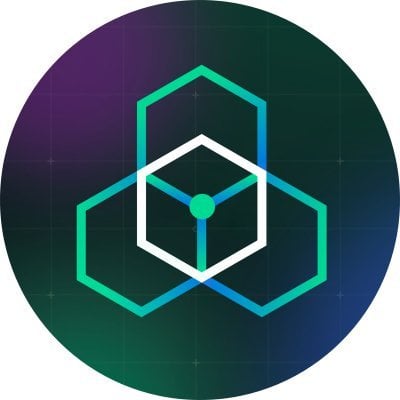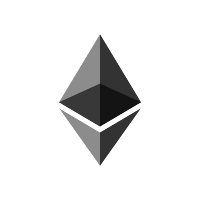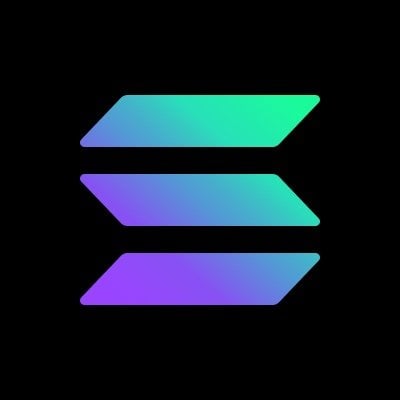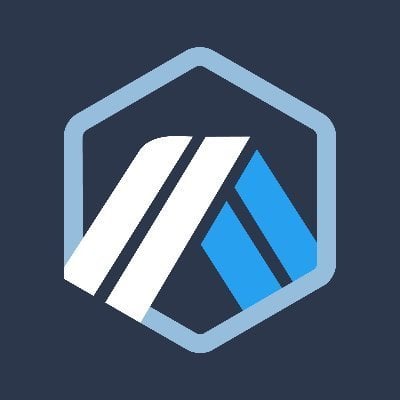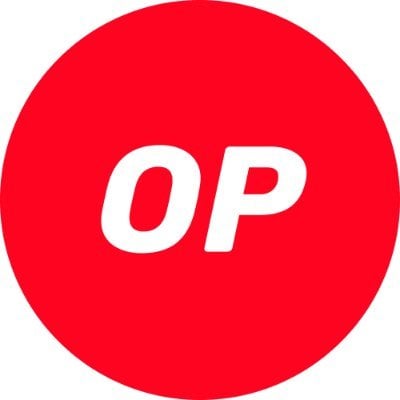zkLink Deep Dive: How to Find Unity in a Multi-Chain World?
Author: Biteye Core Contributor Viee
Editor: Biteye Core Contributor Crush
Community: @BiteyeCN
From Layer 1, Layer 2 to Layer 3, the blockchain island effect has become increasingly prominent, and multi-chain interconnection has garnered more attention. One gives birth to two, two gives birth to three, and three gives birth to all things. Whether there will be L4, L5, or Ln above L3 remains unknown. One of the most pressing issues at present is how to combine the fragmented liquidity islands. zkLink has proposed a solution for aggregating multi-chain liquidity around this issue.
This article will focus on the technical principles, current status, and development roadmap of zkLink, providing a comprehensive analysis of the multi-chain aggregation layer based on ZK-Rollup technology ------ zkLink.
01. What is zkLink and what problems does it aim to solve?
With the development of blockchain technology, the continuous emergence of Layer 1 (L1) public chains like Ethereum and Solana, and the rise of Layer 2 (L2) solutions such as Arbitrum, Optimism, zkSync, and Starknet, while meeting different user needs, it has also brought about issues such as liquidity fragmentation and high cross-chain costs. Additionally, developers face increased complexity when deploying dApps due to different programming languages and tools across chains.
Imagine a country made up of islands, where transportation is inconvenient and the financial system is not yet mature, with each small island (blockchain) having its own independent currency and trading system.
You want to shop between different islands (like Ethereum, Solana, Arbitrum), but each time you cross an island, you need to exchange currency, pay transaction fees, and worry about losing your money.
This is the interactive dilemma currently faced by blockchain users: fragmented liquidity, high transaction costs, and insecurity.
How can cross-chain transactions become as convenient and secure as those on the same chain? zkLink provides the answer.

(Source: zkLink Official Website)
By unifying L2 and L1 through zero-knowledge proof (ZKP) technology, zkLink achieves multi-chain state synchronization and native asset aggregation.
Tokens issued on different L1 chains and L2s by the same entity, such as USDT Ethereum, USDT BSC, etc., will be merged into a single USDT token in zkLink Rollups.
In other words, this island nation has established a comprehensive trading center that consolidates the currencies of different islands onto one platform, eliminating the need for frequent currency exchanges, high transaction fees, or concerns about asset security. This is the multi-chain liquidity aggregation functionality that zkLink achieves, far surpassing a "cross-chain bridge."
Based on this, zkLink has developed two main products: zkLink Nova and zkLink X
zkLink Nova is the first aggregation L3 zkEVM Rollup network built on Ethereum and Ethereum L2, utilizing the zero-knowledge Ethereum Virtual Machine (zkEVM) to aggregate assets across multiple L2 networks on Ethereum, addressing the issues of liquidity and asset fragmentation on Ethereum.
zkLink X is an aggregation Rollup infrastructure that supports customized multi-chain dApp development, connecting L2 and L1, allowing developers to feel as if they are building applications on a single chain, while in reality, they can access multi-chain liquidity.
Returning to the analogy of blockchain and islands, zkLink Nova is like a universal shopping card, allowing you to shop freely between various malls on different islands (interactions) without repeatedly exchanging currencies.
Meanwhile, zkLink X is like a universal toolbox, enabling you to customize any type of mall store (dApp) according to your needs, like building with blocks, and these stores also support currencies from different islands.
In this way, zkLink not only integrates liquidity scattered across different chains, reduces transaction costs and security risks, but also simplifies multi-chain deployment of dApps, improving user experience and ensuring the security of dApp development.
02. What solutions does zkLink provide, and how does it stand out in the "multi-chain war"?
Multi-chain and cross-chain have become well-trodden topics, but we need to understand that zkLink is not a cross-chain bridge; it is a chain that aggregates multi-chain liquidity.
So, how does zkLink achieve multi-chain aggregation?
The zkLink protocol is a multi-chain ZK-Rollup infrastructure composed of four layers: Settlement Layer, Execution Layer, Sequencer Layer, and Data Availability Layer. These layers are independent and support customized application Rollup deployment. The core value of the zkLink protocol mainly lies in the Settlement Layer and Execution Layer.
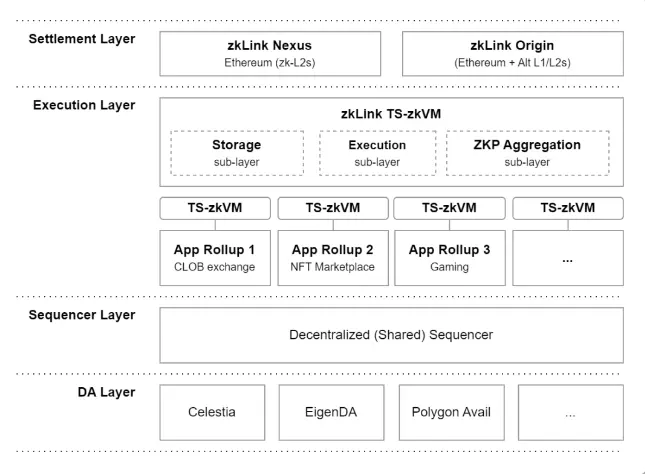
*** (zkLink Protocol Architecture Source: zkLink Official Website) ***
The Settlement Layer of zkLink serves as the core part, similar to an aggregated settlement center that can integrate multiple chains and ensure that each transaction can be verified across multiple chains through synchronization technology, preventing fraudulent operations.
Currently, there are two settlement solutions: zkLink Nexus and zkLink Origin, each targeting different network integration needs.
zkLink Nexus: Connects Ethereum and its L2 networks, inheriting Ethereum's security.
zkLink Origin: Can connect to other L1 public chains (like Solana) and Ethereum for broader integration. Traditional Cross-Chain vs Multi-Chain Aggregation
Trading between different blockchains leads to increased costs and a more complex experience. Whether it is "traditional cross-chain" or "multi-chain aggregation," both are solutions to this problem. For example, consider exchanging tokenA on chainA for tokenB on chainB through a DEX; what is the most primitive way to do this?
First, you need to install a wallet and purchase gas tokens for chainB;
Next, the user needs to trade tokenA for a stablecoin or another intermediate token that can bridge to chainB;
Finally, the user needs to purchase tokenB on a local DEX.
Compared to cross-chain trading, this is clearly more complex and costly, so the emergence of cross-chain bridges has somewhat improved this experience.
However, the costs of cross-chain token trading remain high, and users still find it difficult to conduct seamless and inexpensive token interactions across different chains.
In addition, traditional cross-chain solutions often have a high degree of centralization, making them vulnerable to hacking, which poses a risk of user funds being stolen.
Unlike traditional cross-chain solutions, zkLink provides a more secure multi-chain settlement solution, namely the aforementioned Nexus and Origin, both of which utilize zero-knowledge proof technology (ZKPs).
zkLink creatively applies zero-knowledge proofs to multi-chain interoperability, adopting a decentralized design that does not require a third party to ensure the security of assets and transactions, while also ensuring the safety and consistency of transactions and state transitions, reducing the risks of asset custody, and greatly enhancing security and efficiency. From Layer 2 to Aggregation Layer 3
In addition to multi-chain aggregation, zkLink also shines in building the third layer zkLink Nova, which combines the liquidity islands of Ethereum L2.
Why build L3 to unify the liquidity of the L2 ecosystem?
We all know that the rise of L2 has added a layer of "highway" to Ethereum, making transactions faster and cheaper, but at the same time, it has created an incompatible and fragmented blockchain landscape, where liquidity is trapped on isolated chains.
Native assets on different L2s of Ethereum (like ARB, OP, MANTA, etc.) cannot engage in interoperable trading, and transfers are often time-consuming and costly, with different assets scattered across various L2 networks leading to wasted liquidity.
An increasing number of L2s, sidechains, and decentralized applications have caused liquidity fragmentation, which runs counter to the goal of achieving usability for Ethereum.
This is the price Ethereum pays for developing L2, as it disperses liquidity across dozens of blockchains, urgently needing a higher-level solution to improve interoperability and efficiency.
Compared to most L3s that aim to meet specific application needs and are deployed on a single L2 (such as Starknet or Arbitrum), zkLink Nova is a universal L3 aggregation network built on Ethereum and multiple L2 networks, with Ethereum and its L2s jointly serving as the settlement layer.
Thus, zkLink's construction of L3 zkLink Nova is not just about making each layer cheaper than the previous one, but also embodies the vision of "one Nova to rule them all."

(Source: zkLink Official Website)
In simple terms, ETH deposited from different L2s will automatically merge into the same ETH on Nova.
The same ERC-20 tokens bridged from different networks, such as USDC.Ethereum, USDC.Arbitrum, etc., can be merged into a single USDC on Nova, and the merged USDC will have unified liquidity on Nova, thereby enhancing scalability and optimizing user experience. zkLink vs Other Aggregation Solutions
Many L2s have also recognized the liquidity fragmentation issue and are trying to address it. For example, OP's Superchain, Polygon's AggLayer, and zkSync's Hyperbridge aim to unify liquidity by providing a unified bridge or shared sequencer.
However, they are only applicable to their independent sub-ecosystems and specific tech stacks. In this case, having multiple different tech stacks may exacerbate liquidity fragmentation and cross-chain interoperability issues, leading to a more divided Ethereum ecosystem.
In contrast, any asset on the second layer connected by zkLink Nova can be bridged to the third layer network for fast and interoperable transactions. Although it sacrifices atomic interoperability of cross-aggregated transactions, it provides the broadest liquidity capable of aggregating the entire Ethereum ecosystem.

(zkLink Nova Protocol Architecture Source: zkLink Official Website)
03. From Now to the Future, zkLink and the New Cross-Chain Era
Current Development Status
Since the mainnet launch in March 2024, the zkLink Nova ecosystem has achieved significant development, covering over 90 project partners as of early May (the image was officially released at the end of March and has not yet synchronized data), involving DeFi, tools, social, gaming, and NFTs.
On March 14, zkLink Nova launched the first season of the "Aggregation Parade" reward event, which lasted for a month, offering opportunities to earn Nova points with ETH, L2 native tokens, stablecoins, LSTs, and LRTs, encouraging users to deposit assets into the L3 Nova mainnet.
In simple terms, users can earn Nova points through cross-chain interactions, staking, and inviting new users, which can be exchanged for ZKL tokens in the future.
Currently, the second season of the "Aggregation Parade" reward event is ongoing, where users can enhance their Nova points by interacting with dApps partnered with zkLink Nova.
 Event Details:
Event Details:
https://blog.zk.link/aggregation-parade-phase-ii-defis-turn-to-blossom-on-zklink-nova-7b30e2ab1d82 
(zkLink Ecosystem Source: zkLink Official Website)
From the above activities, it is evident that the team has put significant effort into promoting user growth within the zkLink Nova ecosystem, and the data performance is equally impressive.
The currently running Alpha mainnet has processed over 2 million transactions using zkLink technology, generating 500,000 unique addresses.
According to DefiLlama, as of May 22, zkLink Nova's TVL has surpassed $1 billion, with a 156% increase over the past month, making it the Layer 3 network with the highest TVL.

(zkLink Nova Total Locked Value Source: zkLink Nova Official Website) Funding
In terms of funding, zkLink raised $4.68 million through a CoinList community sale in January this year, and in May last year, zkLink completed a $10 million strategic financing round with participation from Coinbase Ventures, SIG, BigBrain Holdings, and others.
To date, zkLink has raised a total of $23.18 million, which will further develop the Nova protocol.
zkLink's investors are more strategic partners, providing not only funding and manpower but also more resources to deepen cooperation with zkLink.

(zkLink Investors Source: zkLink Official Website) Future Outlook
Currently, the zkLink Nova mainnet has gone live, and the team is upgrading the lightweight node oracle network ZK Oracle to verify cross-chain states as part of improving the zkLink X protocol.
In the future, zkLink will also undergo a series of important upgrades, including support for external data availability (DA) solutions, decentralized proof auction markets, and more.
Currently, zkLink's sequencing service is centrally managed, and the team plans to integrate decentralized solutions such as Espresso, Astria, and Fairblock in the future to reduce centralization risks. Additionally, the ZKL token is set to launch soon, and the team is preparing for the TGE.
It is clear that zkLink is continuously improving on the path to bringing unprecedented liquidity aggregation to Ethereum and its L2s.
If achieving "seamless on-chain interactions" was a dream, perhaps zkLink is turning that dream into reality.

(zkLink Roadmap Source: zkLink Official Website)
04. Conclusion
Which layer will ultimately emerge as the winner in the battle of L1, L2, and L3? Only time will tell. At the same time, the market will show us that L1 and L2 will always have their necessity; this is not a zero-sum game.
The future is destined to be an era of multi-chain coexistence, and zkLink will become a key hub connecting various components and systems of the L1 and L2 ecosystems.
It is easy to imagine that zkLink is leading a more interconnected multi-chain new era, bringing more new opportunities.






